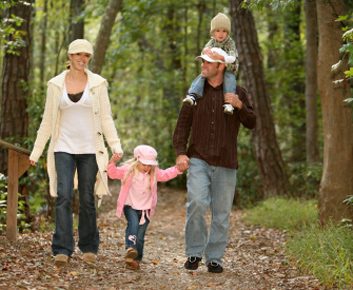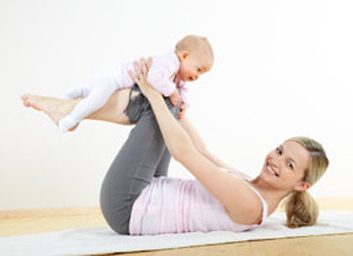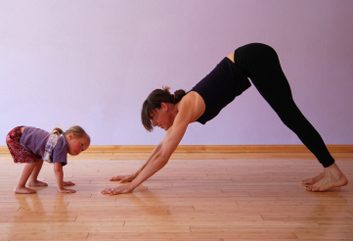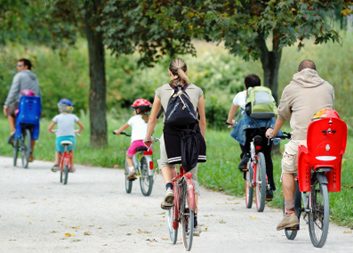
Are your kids getting enough exercise?
The report is out on how much exercise Canadian kids get-and the news isn’t good. Only 12 percent of children in Canada meet the recommended physical activity guidelines of 90 minutes each day, according to Active Healthy Kids, a Toronto-based organization for increasing physical activity among children and youth.
Fortunately, weaving more activity into your child’s day is easier than you might think, especially when you build it into family time. And research shows being active as a family makes a lasting and positive impression on your kids’-and your own-health and fitness. “When parents are more active, their kids tend to more active, as well,” says Michelle Brownrigg, chief executive officer for Active Healthy Kids.
Here are six easy ways to make fitness work for your family.

Get fit with unstructured play
While school and community sports teams add activity to your kids’ daily routines, not all children and teens are drawn to organized sports; besides, most parents are on the sidelines, not running around with their kids.
To stay fit as a family, Brownrigg suggests planning unstructured activity into your kids’ day, especially if you’ve got young ones. Examples: Tag-type games, playground fun and impromptu dancing, skipping and hopping. “It’s an opportunity to be active, but also to build on your children’s social, emotional and cognitive skills,” says Brownrigg.

Tie activities to your child’s interests
Since some kids (and adults) love long walks while others prefer touch football or hip-hop dance, even the most well-intentioned family fitness pursuits can backfire if your kids aren’t game. For best results, says Brownrigg, offer lots of choice and variety for being active together.
“Experiment with activities that have a physical component but that also connect to each child’s identity, making them feel joyful when doing it,” says Brownrigg. Got a crafty kid? Decorate a balloon that you later use as a ball to volley back and forth. For a science-minded child, take a trek in the great outdoors-you’ll reap the benefits of exercise while also exploring the science of nature.

For families with babies and toddlers
The lifestyle patterns of kids under six predict their level of health and obesity later in life, according to a report from Active Healthy Kids. It’s never too early to model fitness behaviours for your kids, starting with simple parent-baby exercise, such as lifting your baby for “chest presses” and stroller walking or jogging.
Looking for some inspiration? Try our fitness plan for new moms that can help you lose baby weight.

For families with preschoolers and kindergarteners
Most kids at this age respond to games where everyone can dance, wiggle, skip and jump around. Blending singing and activity-think “head and shoulders, knees and toes”-or music and movement also works well; try freestyle dancing, dance-and-freeze games or simply hopping to a song’s beat.
Brownrigg also suggests catering to young kids’ interest in animals with yoga poses like Downward Facing Dog.

For families with school-age kids
Weather permitting, play outside. Plan adventures like bike rides, backyard Frisbee or roller-blade hockey. Or, stage a non-competitive, mock triathlon where you and your kids swim, bike and run around all in one outing (there are also formal but scaled-down triathlon races just for kids and teens, such as Kids of Steel).

For families with tweens and teens
While it’s best to limit TV and computer time, high-tech tools like Wii Fit may help integrate your child’s interests with a more active lifestyle. For example, playing Wii Fit tennis, golf or yoga together at home might eventually lead to a reluctant exerciser (be it you or your teen) feeling interested and confident enough to try the real thing.
Brownrigg also suggests tapping into teens’ attention to trends in popular culture. Kids who watch dance-based reality shows, such as So You Think You Can Dance, might be open to trying a dance class, or organizing their own, with friends (now’s the time when kids might be more receptive to exercising with peers than their parents).

Adopt a healthy attitude
Regardless of what exercise you do as a family, be sure to frame physical pursuits as fun, never a chore. Encourage your kids to seek out activities based on their interests, and be creative! “Let your kids lead you,” says Brownrigg.
Related:
• How to make exercise a habit
• Are we making our children fat?
• 5 ways Canadians are fighting obesity
